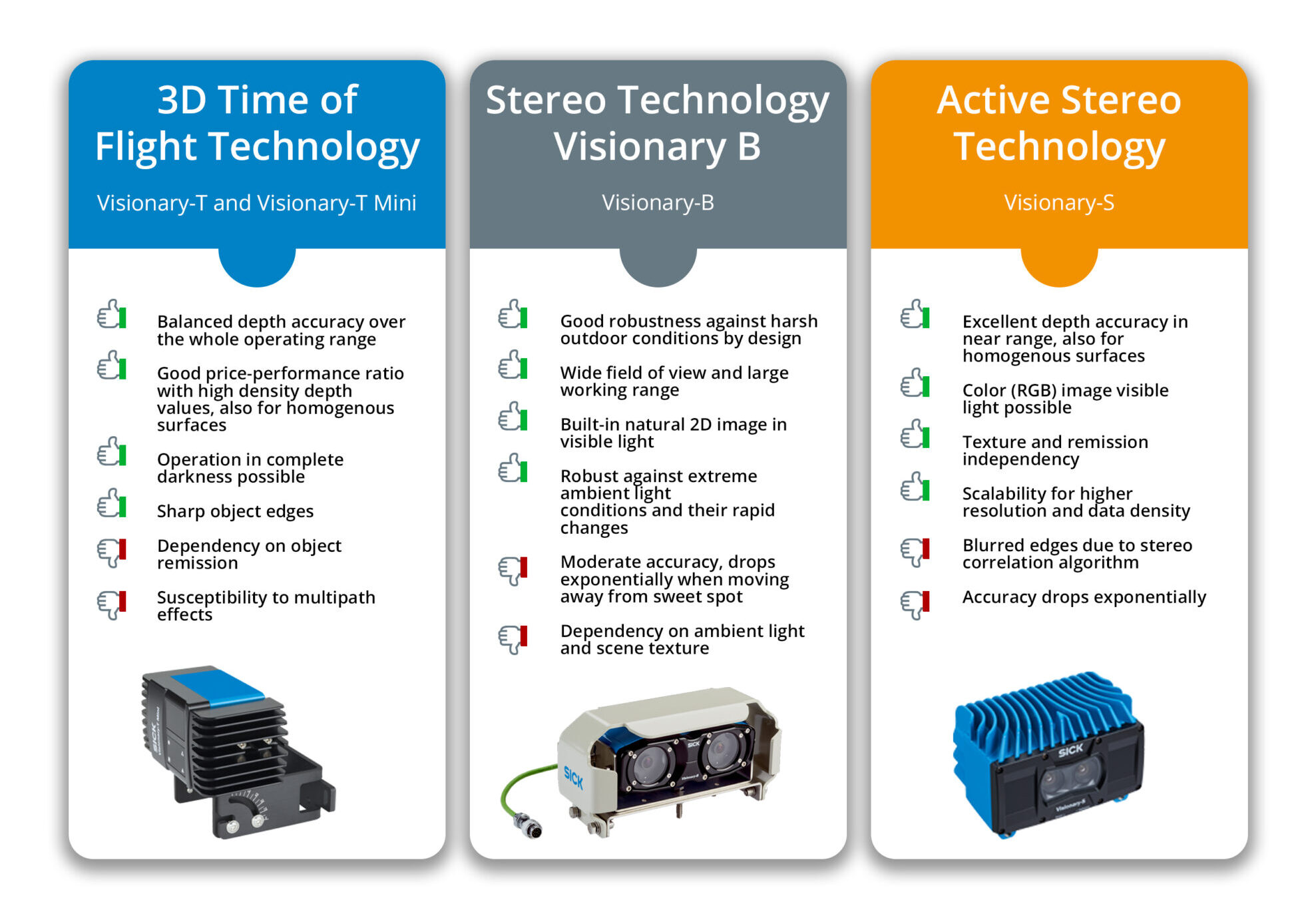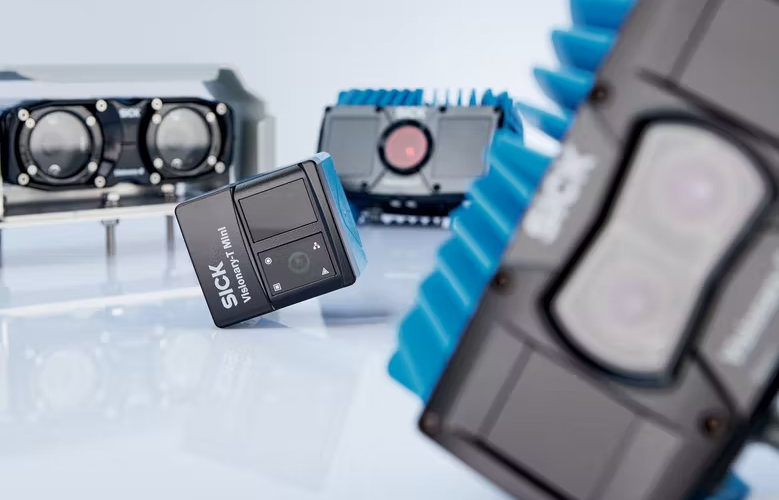How different technologies behind 3D cameras keep a wide range of applications in focus
What is a 3D snapshot camera?
3D snapshot cameras are vision sensors that perceive a detailed 3D image of the surrounding environment in a single shot. This rich 3D information enables a broad spectrum of automation and assistance tasks, as the data essentially acts as a pair of eyes for autonomous vehicles, robot guidance applications, and more. But the world of 3D snapshot cameras is not a uniform one. Three technologies mainly exist here: 3D time-of-flight (“3D TOF”), 3D stereovision (“stereo”), and 3D structured light stereovision (“active stereo”).
You’re telling me there are three different kinds?
Yes. And we’re here to break down each one. They differ substantially in their operating principles and performance under different circumstances, making each technology better suited to certain applications. This is great news! The more technology available, the better solution you’re able to create for your specific automation need.
What are 3D snapshot cameras used for?
We’re glad you asked. 3D snapshot cameras cover a wide range of applications across industries, like:
- Collision avoidance for AGVs or manned heavy-duty vehicles
- Automated palletizing and depalletizing
- Goods and freight dimensioning
- Robot guidance
- Pick-and-place processes
Three technologies for the 3D snapshot camera: A comparison

Even though the working principle of each described technology is different, all three technologies share a common feature: The ability to generate high density 2D and 3D information of the environment. SICK’s vision portfolio offers products based on every 3D snapshot technology. This guarantees technically and economically neutral evaluation, and therefore optimal application consulting. The direct comparison of these three different technologies ensures the customer finds the technology best suited to the individual application.
Want to learn more? Our white paper, A Comparison of Working Principles for 3D Time-Of-Flight, Stereo and Active Stereo, guides you through the basic technical principles of each technology. This basic understanding of working principles can help you find the best fitting solution for your specific task of industrial 3D machine vision—all from a technology-neutral point of view.
Have more questions about 3D snapshot cameras?





